Earth preserves its history in various natural archives, as discussed in previous articles, Decoding Earth’s History – A Closer Look at Tree Rings Using MicroXRF. Among the most fascinating are cave speleothems, mineral deposits left behind by dripping water in caves. These stunning formations, commonly known as stalactites and stalagmites, offer a trove of data on past climates, environmental shifts, and even biomineralization. At IXRF Systems, we have harnessed the capabilities of Micro X-ray Fluorescence (µXRF) with high-spatial resolution to delve deeper into these geological masterpieces. This article delves into the significance of cave speleothems and how µXRF has elevated our understanding of them, particularly in relation to biomineralization phenomena.
What is a Cave Speleothem?
In the depths of a cave, water filtering through the Earth’s crust brings along a variety of minerals. As this mineral-rich water drips and evaporates, it deposits minerals such as calcite, forming captivating structures like stalactites and stalagmites. However, their aesthetic allure is just the tip of the iceberg. Speleothems function as Earth’s historical diaries, with their layered growth patterns akin to tree rings, documenting past events ranging from rainfall to volcanic eruptions.
Biomineralization in Cave Speleothems
Beyond geological signatures, speleothems also capture evidence of biomineralization, a process where living organisms influence mineral deposition. This provides a glimpse into the types of microorganisms that may have existed in the cave environment from centuries past and how they interacted with their surroundings. Biomineralization can affect the texture, composition, and elemental distribution within speleothems. It is, in fact, a process that is studied by astrobiologists in their pursuit of evidence of extraterrestrial life.
Speleothem Analysis using µXRF
µXRF has been transformative in speleothem research, offering non-destructive elemental composition analysis. This is particularly impactful in studying biomineralization processes, which often involve subtle changes in elemental makeup.
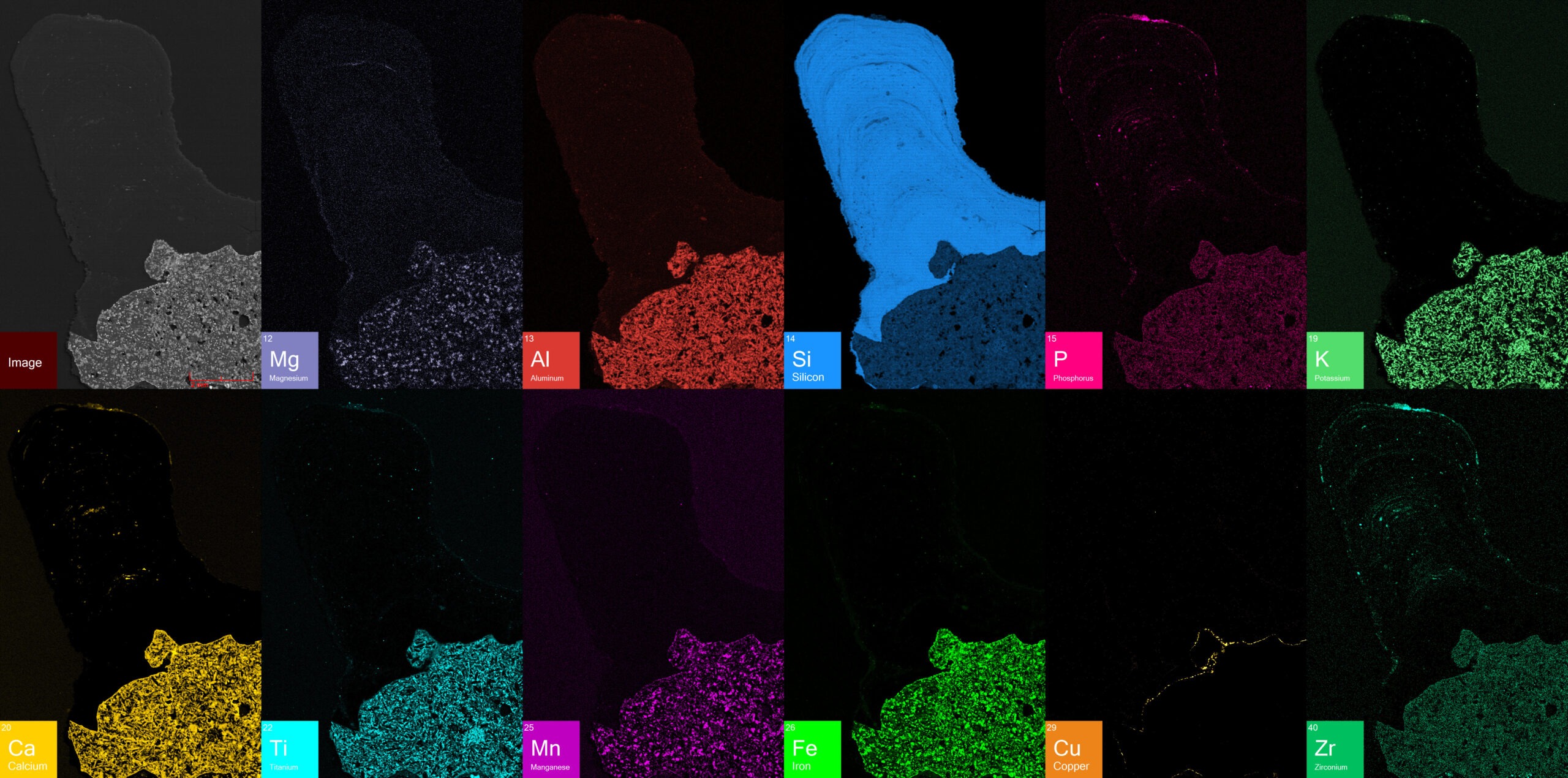
Figure 1: Elemental intensity maps of Cave Speleothem sample analyzed by IXRF System’s Atlas µXRF. The sample was run with a small pixel/spot size of 8µm.
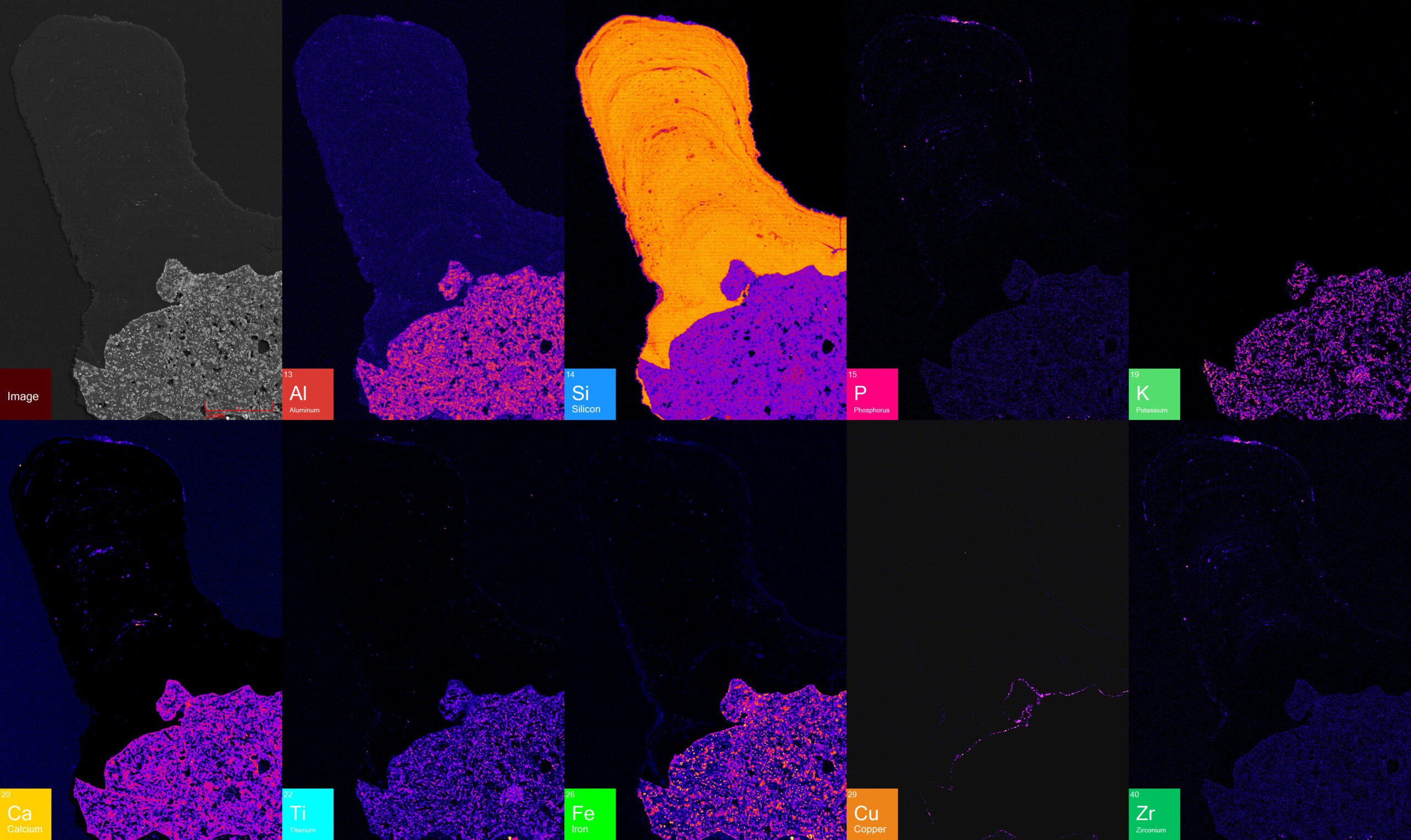
Figure 2: The maps above are from the same sample used in Figure 1, except they are set to a fire color scale to help visualize the intensity difference within each elemental map (note that intensity data can only be compared within a given elemental map and cannot be compared between different elemental intensity maps).
Benefits of microXRF
- High Spatial Resolution: The high-spatial-resolution capabilities of µXRF (down to 5μm pixel size), provide intricate mapping of trace elements, crucial for understanding both geological and biological phenomena like thin laminations and biomineralization.
- Non-Destructive Analysis: The non-invasive nature of µXRF ensures that these invaluable speleothem samples remain undamaged, preserving them for future research.
- Rapid Data Collection: Traditional speleothem analysis methods can be labor-intensive and slow. µXRF expedites this process, enhancing research productivity.
- Qualitative & Quantitative Insight: Beyond element identification, µXRF provides both qualitative and quantitative data. This is especially valuable in biomineralization studies, where the concentration of specific elements can indicate biological activity.
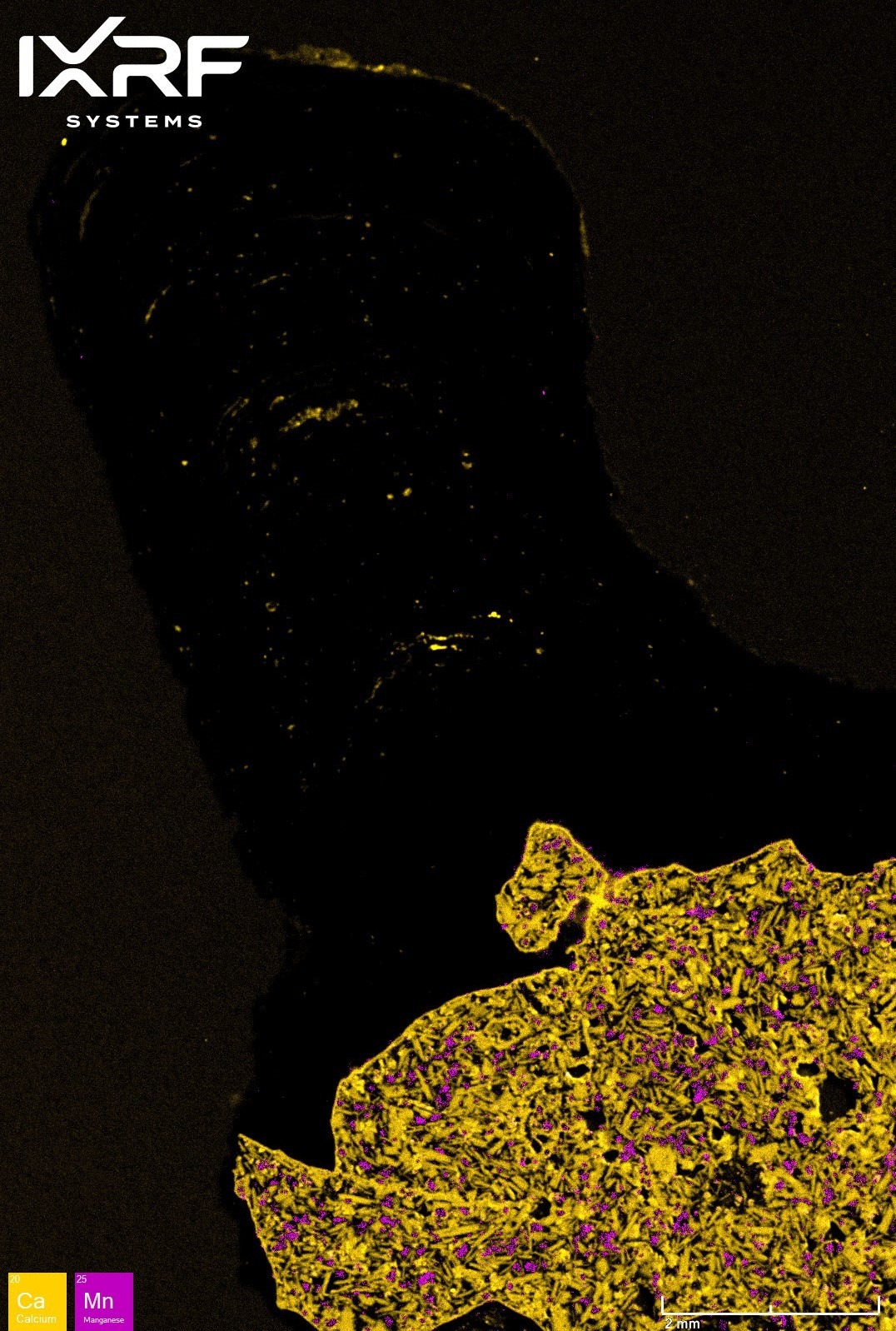
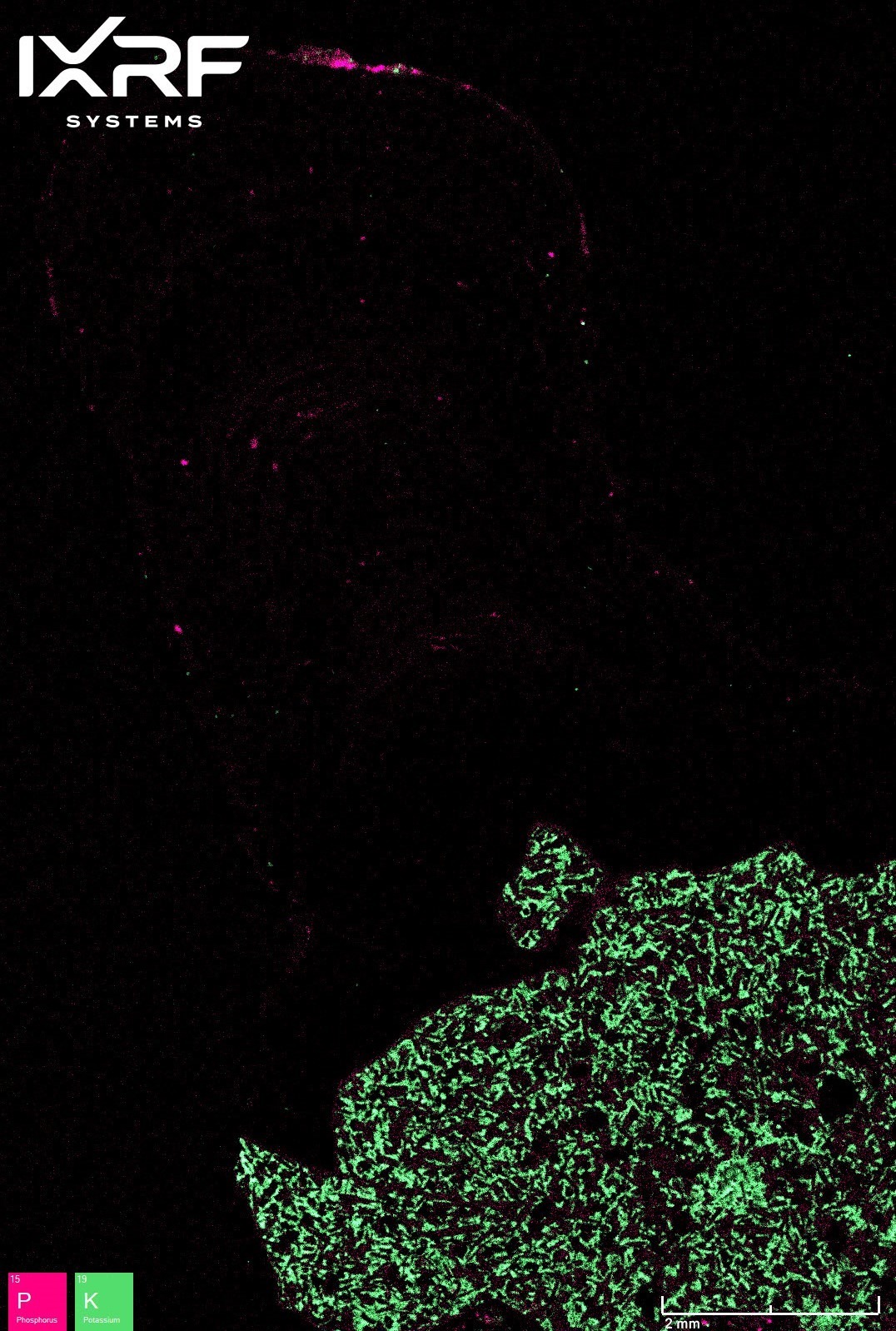
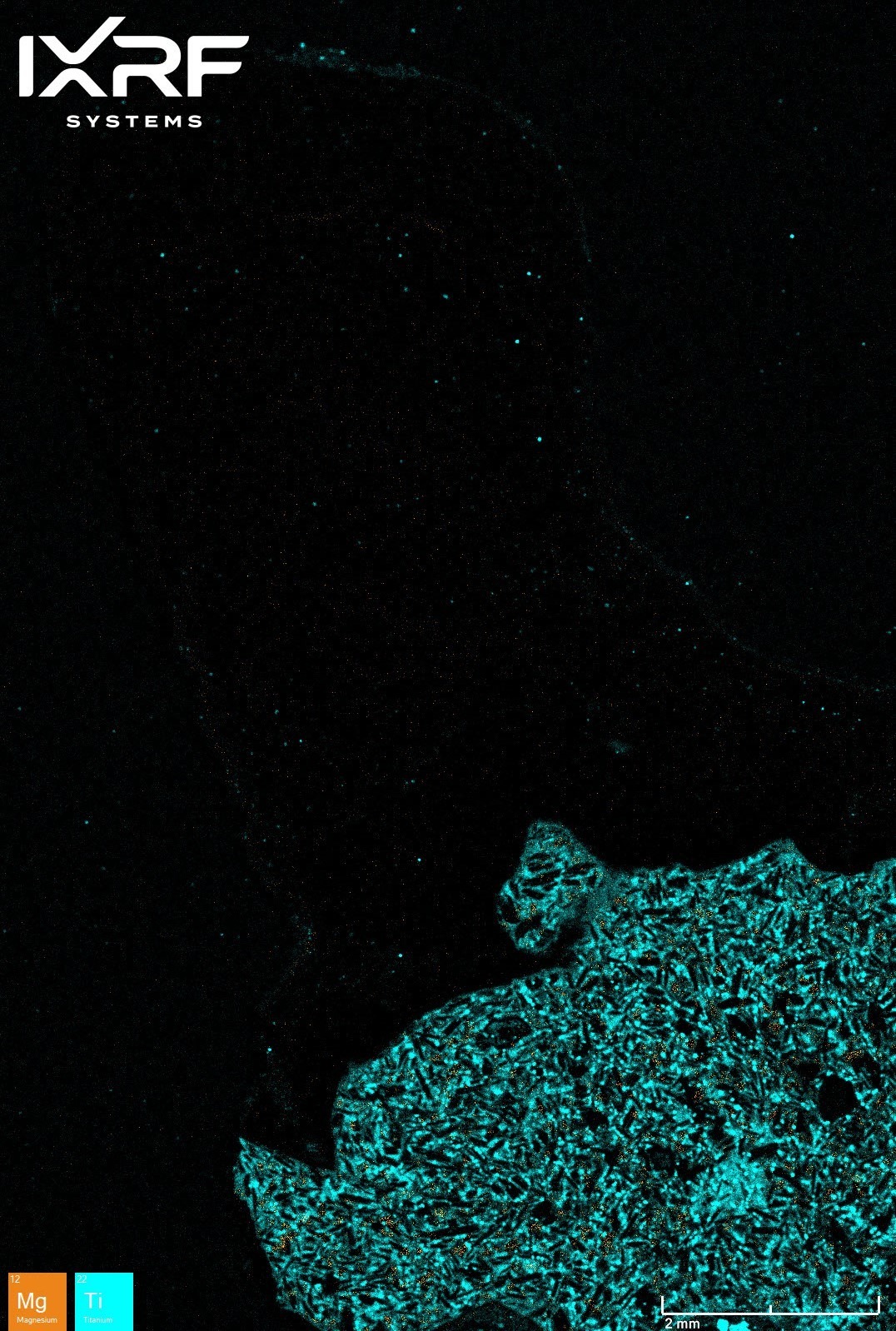
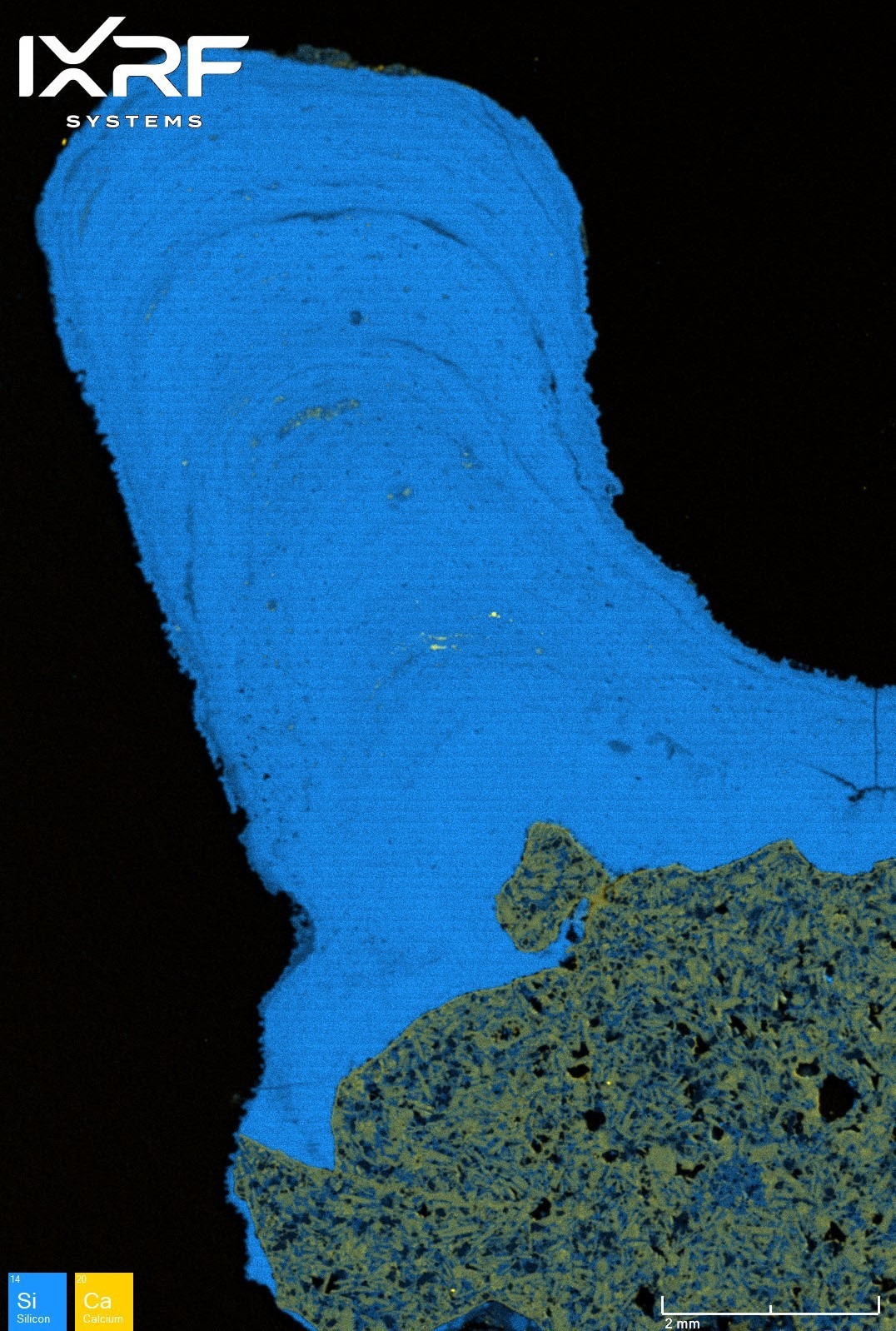
Figure 3: Multiple µXRF maps overlayed to display the contrast of elements.
Gaining Insights into Earth’s Past
µXRF allows scientists to probe the elemental composition of speleothems, providing clues about past climates, soil activity, and biomineralization. For instance:
- Elevated levels of strontium (Sr) could signify drier periods, as Sr is more soluble under such conditions.
- High manganese (Mn) and iron (Fe) concentrations may indicate increased soil erosion or activity.
- Variances in elements like phosphorus (P) or sulfur (S) can hint at past biological processes potentially linked to biomineralization.
Conclusion
Speleothems are more than just beautiful cave formations; they are windows into our planet’s past and living labs of geological and biological processes. The high-spatial-resolution capabilities of µXRF technology at IXRF Systems have revolutionized our ability to read these natural archives with unprecedented clarity. As we continue to refine our technology, we eagerly anticipate what hidden stories the speleothems have yet to reveal. These narratives deepen our understanding of Earth’s history and could help shape its future.
Whether you’re a geologist, a researcher, or just intrigued by our planet’s intricate past, now is the moment to utilize the prowess of µXRF technology. Together, let’s explore every layer, element, and story that awaits us.
IXRF Systems is a leading provider of X-ray fluorescence instrumentation. With our advanced analytical solutions, we are committed to supporting research, quality control, and educational endeavors across various industries.

